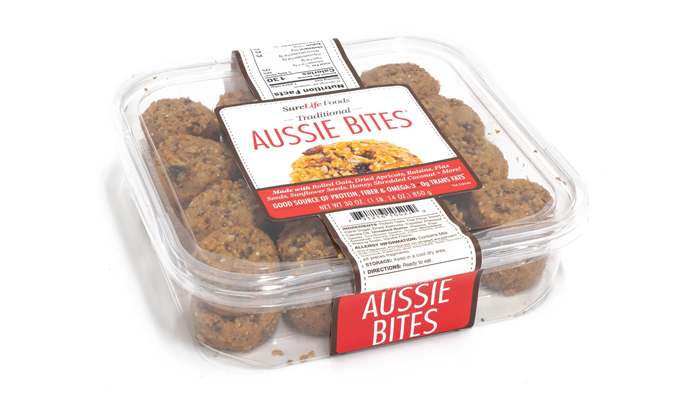In the online business world there’s a skill spectrum that looks like this…
Content <- – – – – – – – – -> Marketing
The majority of people either lean to the left and are good at content or lean to the right and are good at marketing.
You don’t have too many people who are equally great at both.
One of the best ways for someone who is great with content to grow their online business is to simply partner with someone who is great at marketing. That way they can handle the marketing and you can focus on what you are good at.
However, in the meantime, if you are doing your own marketing…
…either to learn about it because you want to be able to identify good marketing when you see it so that you can identify a good marketing partner OR if you just want to do it all yourself…
It’s important to learn a few marketing shortcuts to increase your chances of success.
In the case of profiting from the money you invest in your ads, one of those shortcuts is learning how to optimize your Average Order Value (AOV).
What is Average Order Value (AOV)?
As the name suggests, it’s the average value (amount) someone spends with you on their first order.
To calculate this number you divide your total revenue by your total orders.
So if you made $1,000 revenue today and you had 10 orders today, your AOV would be $100 (1,000 revenue ÷ 10 orders).
If you made $500 revenue and you had 20 orders, then your AOV would be $25 (500 revenue ÷ 20 orders).
Why is Average Order Value Important?
The higher your Average Order Value, the more you’ll be able to spend to acquire each customer.
The first step with any offer is to see if it has a pulse. “Will people buy it?”
The next question is… “How much do I have to pay to get one buyer on average?” (this is your Cost Per Order metric)
To find that number you take your total advertising investment and divide it by your total orders. So if you spent $570 to get 10 orders then your Cost Per Order is $57 (570 spend ÷ 10 orders).
Now you know that your Average Order Value needs to be at least $57+ in order for you to breakeven.
And if you have a high enough AOV, say $100, $150, or even $200+ on the front end you can definitely afford to buy a lot more traffic and scale up your volume of orders.
Here Are 3 Ways To Increase Your Average Order Value
1 – Pre-Purchase Upgrade
Whatever product you are selling now, there is always a way to make it more “premium”.
Whether it’s offering additional content, white-glove service, or even allowing people to “become a member” of an exclusive club or group, you can create a premium version of what you’re currently offering.
In any market there are going to be people who always want the “best option”, even if that means paying more money for it. And if you don’t have a “best option” for them to purchase then they will just purchase what you have available.
When people click Add To Cart on your sales page, instead of sending them directly to the checkout page, you can send them to a “Choose Your Preferred Option” or “Choose Your Preferred Package” page that gives them the option to choose between buying the basic option or a premium option.
A certain percentage of your customers will go for the premium option and that will help increase your AOV tremendously.
Here’s the math without a premium version…
10 ebook orders at $27 each without premium option = $270 total revenue ÷ 10 orders = $27 AOV
Now if you created a $199 “premium” version of the Ebook, perhaps now it also comes with a video version, audio version, and they get access to a live group Q&A call you will do for all premium members, etc.
Here’s the math with a premium version…
Assuming you get the same number of orders but this time 30% of your customers buy the premium version.
7 ebook orders at $27 each + 3 premium buyers at $199 each = $786 total revenue ÷ 10 total orders = $78.60 AOV
That’s almost TRIPLE your previous average order value.
Side Note: A few years ago I used to sell recipe books. I offered customers a Bronze, Gold, or Diamond package. 60% took the Bronze package at $19.95 and 40% would buy the Diamond package at $99.
Each market will be different and you’ll want to test different price points, but if you don’t have a premium option already, create one!
2 – OrderBump
Now, once your customers are at your checkout page (where they’ll enter their payment info) you can offer them something additional at a special price.
Think of it like the impulse buys at the checkout aisle at the grocery store. They have all sorts of candy bars, magazines, or other things you can add to your cart right before you checkout.
In this case, think of something complementary you could offer your customers.
What else will they need to solve their problem that your product doesn’t solve?
Does your product create a future problem?
Do your customers want access to you?
Here you can offer one thing or a bundle of things at a reduced price. All they have to do to add it to their order is to check the box that says “Yes, add this to my order.”
You’ll get another percentage of buyers to add that as well.
Here’s how an order bump could help increase your AOV…
Let’s take the previous example of your $27 ebook and your $199 premium option and this time let’s add a $60 orderbump.
Here’s the math…
7 ebook orders at $27 each + 3 premium buyers at $199 each + 2 of those same customers added the orderbump at $60 each = $906 total revenue ÷ 10 total orders = $90.60 AOV.
That’a big jump from where you started at an AOV of just $27.
3 – Post Purchase Upsell
Now, the next place to help increase your AOV is the page people land on right after someone clicks the “Place Order” button.
They have just made the purchase and you can now offer them something else.
What you offer your customers here will depend on your specific business model, strategy, and market, but here are a few different things you could offer.
An “Advanced” version of your Ebook that goes deeper into the topic.
A software or some way to automate what you are showing them in your Ebook.
A done-with-you service to speed up their results.
A done-for-you service to speed up their results and reduce their required energy output.
An option to “become a member” of an exclusive club or membership that gets awesome perks.
Now for this example, let’s say you offered a monthly membership that gave people access to join a monthly group call with you for $99/mo. Let’s say you now gave people the option to get 12 months of access for the price of 10 months ($990 instead of the normal $1,188).
Assuming that 1 person out of your 10 orders purchases, here is the new math…
7 ebook orders at $27 each + 3 premium buyers at $199 each + 2 of those same customers added the orderbump at $60 each + 1 of those same buyer became a member at $990 = $1,896 total revenue ÷ 10 orders = $189.60 AOV.
That is SEVEN times your original AOV of just 27 dollars.
With an AOV that high you don’t have to be great at ads to make them work for you because you can now spend up to $189.60 to acquire just one customer and still breakeven on the front-end.
And that’s just with the three strategies above.
There are many more ways to increase AOV but I’ll save those for another time.
For now, calculate your existing AOV and add even just one of these strategies to your current setup and see what it does for you.
And if you don’t yet have anything for sale but are working on your first product, map out what your pre-purchase upgrade, orderbump, and post-purchase upsell could be.
You don’t have to be great at marketing or copywriting, just think of and test different combinations of content, service, membership, or access that would be most helpful to your market and come up with different ways for your customers to purchase those from you.
See you next time…
-Eddys Velasquez
DigitalMarketingRx
.
.
.










